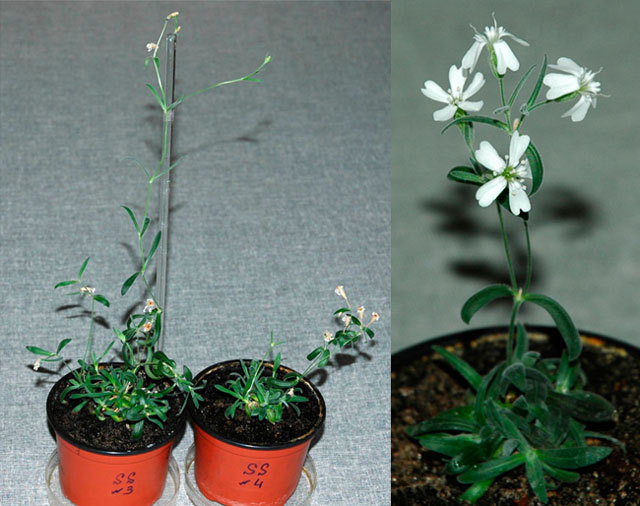A team of scientists from the Institute of Cell Biophysics and the Institute of Physicochemical and Biological Problems in Soil Science, Russian Academy of Sciences, has successfully revived a flower from a 32,000-year-old fruit buried in Siberian permafrost.
In a study, published in the Proceedings of the National Academy of Sciences, the scientists describe how they regenerated fertile plants of Silene stenophylla, a flowering plant native to Siberia, that had been buried by an Ice Age squirrel near the banks of the Kolyma River.
The scientists discovered about 70 prehistoric storage chambers of this squirrel species in 2007 at depths of 20–40 m below the present day surface in permanently frozen ice deposits on the right bank of lower Kolyma River, northeastern Siberia.
The number of seeds and fruits found in the chambers of these squirrels reached up to 600–800 thousands.
“Several immature fruits were found at a depth of 38 m in a seed conglomerate from the Duvanny Yar burrow,” the team wrote in the paper. “Silene seeds and fruits were dominant in this burrow and were in a state of good morphological preservation. Radiocarbon dating showed them to be 31,800 years old.”
The mature seeds had been damaged—perhaps by the squirrel itself, to prevent them from germinating in the burrow. But some of the immature seeds retained viable plant material.
The team extracted that tissue from the frozen seeds, placed it in vials, and successfully germinated the plants, according to a new study. The plants—identical to each other but with different flower shapes from modern S. stenophylla—grew, flowered, and, after a year, created seeds of their own.
The team claims that the regenerated plants of S. stenophylla flower are now the most ancient, viable, multicellular, living organisms. The previous record-holder is a date palm derived from a 2,000-year-old seed recovered from the ancient fortress of Masada in Israel.


1 thought on “Russian Scientists Revive 32,000-Year-Old Flowering Plant”
Roland Brinkworth
(December 25, 2019 - 2:17 pm)Problem is that radio carbon dating is only semi-reliable up to about 5,000 years. 31,000+ years is baloney.